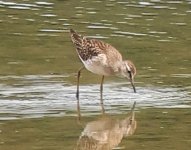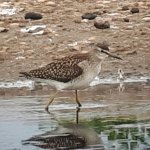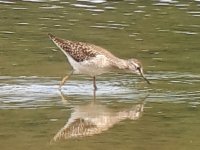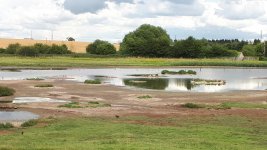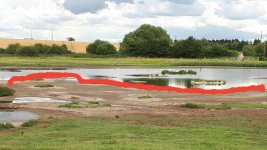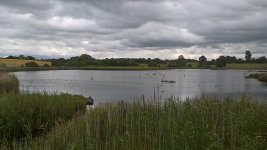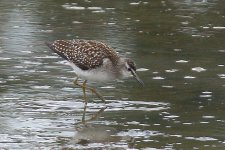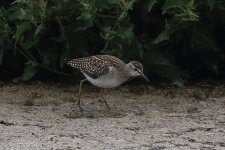upstarts1979
Well-known member
Birding at Reserve today
MOORS:
As expected at the end of the breeding season the passerines become less conspicuous. All sorts of contact calls can be heard and it's challenging to suss them out. Today calls were mostly from warblers. The chacking of blackcap and the single note "swee" call , recently more autumn birds mostly juvs can give a longer "sweeoo" note which is confusing when you first hear it. The reed loving sedge, reed and cetti's warblers were all silent. One big event at mid day was the large gathering of Swift above the southern crop fields. These birds arrived en-masse prior to heavy showers and then went on a feeding frenzy before moving south. The 3rd Common Tern chick fledged today. More little grebe are appearing with at least 8 chick/ juvs from 7 broods with fresh chicks in SW corner. One disappointing aspect of the breeding season is low number of tufted broods not sure of the reason but the ever presence of the otter might be a factor.
Species Count MOORS:
Little grebe 15+. GCG 2.
Mute Swan 11. Greylag 14. grey heron. Shoveler. Tufted 15 ads. Water rail. Coot 120 +. Lapwing 55. Common tern 8 ads 2juv/ chicks. Hobby catching dragonflies. Swift 400+. Sand martin 10. Blackcap c5 . Chiffchaff 6. bullfinch. Greenfinch.
MOORS:
As expected at the end of the breeding season the passerines become less conspicuous. All sorts of contact calls can be heard and it's challenging to suss them out. Today calls were mostly from warblers. The chacking of blackcap and the single note "swee" call , recently more autumn birds mostly juvs can give a longer "sweeoo" note which is confusing when you first hear it. The reed loving sedge, reed and cetti's warblers were all silent. One big event at mid day was the large gathering of Swift above the southern crop fields. These birds arrived en-masse prior to heavy showers and then went on a feeding frenzy before moving south. The 3rd Common Tern chick fledged today. More little grebe are appearing with at least 8 chick/ juvs from 7 broods with fresh chicks in SW corner. One disappointing aspect of the breeding season is low number of tufted broods not sure of the reason but the ever presence of the otter might be a factor.
Species Count MOORS:
Little grebe 15+. GCG 2.
Mute Swan 11. Greylag 14. grey heron. Shoveler. Tufted 15 ads. Water rail. Coot 120 +. Lapwing 55. Common tern 8 ads 2juv/ chicks. Hobby catching dragonflies. Swift 400+. Sand martin 10. Blackcap c5 . Chiffchaff 6. bullfinch. Greenfinch.
Last edited:





